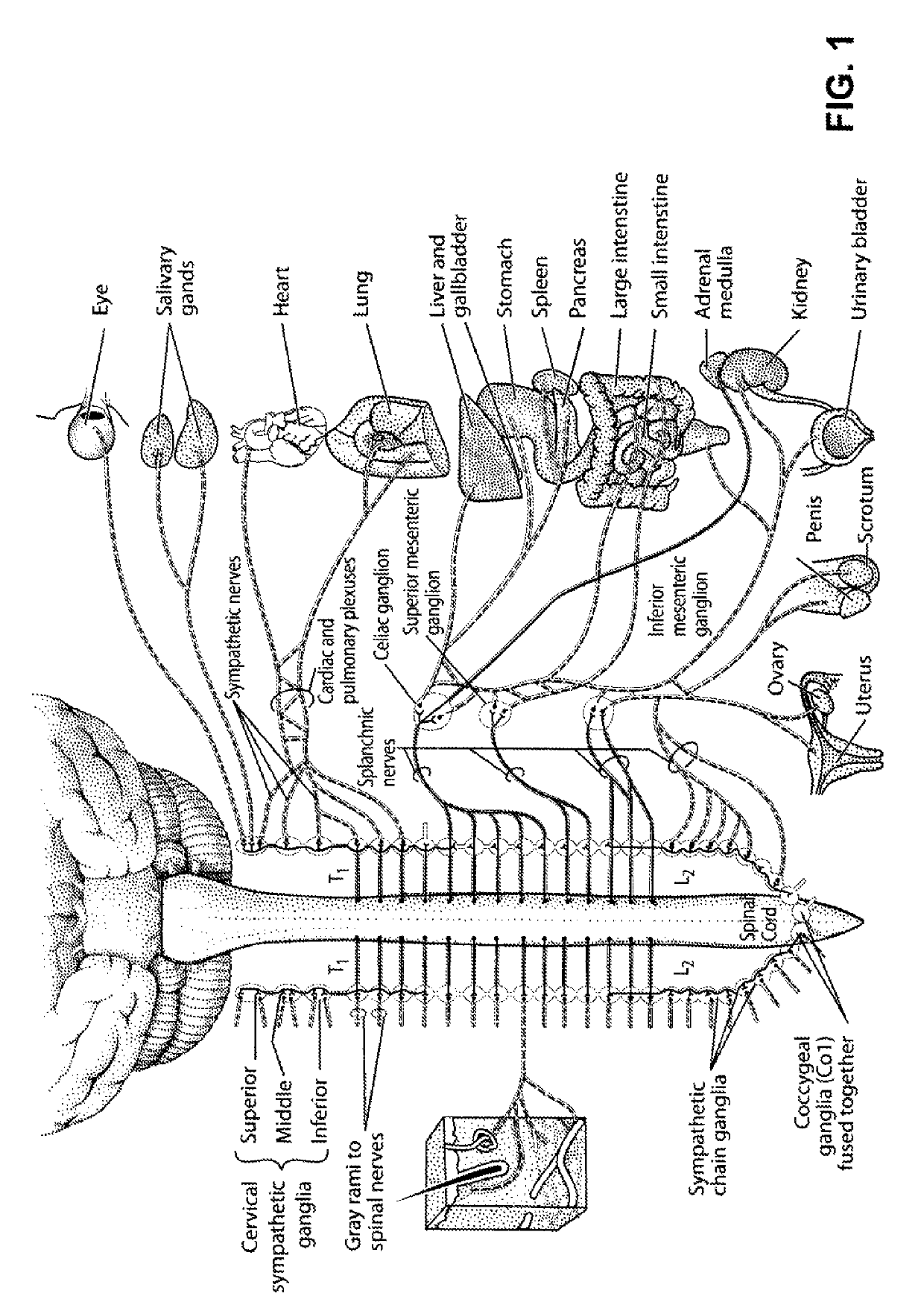Devices and methods for treatment of heart failure by splanchnic nerve ablation
a technology of splanchnic nerve and heart failure, which is applied in the field of devices and methods for treating heart failure by splanchnic nerve ablation, can solve the problems of enlargement of the heart chamber, difficulty in walking, and difficulty in everyday activities such as walking, so as to reduce venous congestion, improve quality of life, and reduce the preload of cardiac muscl
- Summary
- Abstract
- Description
- Claims
- Application Information
AI Technical Summary
Benefits of technology
Problems solved by technology
Method used
Image
Examples
Embodiment Construction
[0061]The present invention relates to a medical device and method that offers treatment of heart disease, dysfunction and heart failure, particularly HFpEF through the mechanism of increased venous capacitance and relief of pulmonary congestion and increased diuretic responsiveness. This treatment is provided through ablation of at least a portion of a splanchnic nerve (e.g., greater splanchnic nerve or lesser splanchnic nerve) with a catheter delivered to a vessel (e.g. azygos or hemiazygos vein or intercostal vein) to impede or stop communication of a nerve signal along the ablated nerve, which can affect physiological responses that are directly or indirectly involved in the numerous factors of cardiovascular health.
[0062]One preferred embodiment comprises a catheter delivered through a patient's vascular system to an azygos or hemiazygos vein and their branches for ablating a portion of a right or left greater splanchnic nerve. The catheter may comprise an ablation element (e.g...
PUM
 Login to View More
Login to View More Abstract
Description
Claims
Application Information
 Login to View More
Login to View More - R&D
- Intellectual Property
- Life Sciences
- Materials
- Tech Scout
- Unparalleled Data Quality
- Higher Quality Content
- 60% Fewer Hallucinations
Browse by: Latest US Patents, China's latest patents, Technical Efficacy Thesaurus, Application Domain, Technology Topic, Popular Technical Reports.
© 2025 PatSnap. All rights reserved.Legal|Privacy policy|Modern Slavery Act Transparency Statement|Sitemap|About US| Contact US: help@patsnap.com



